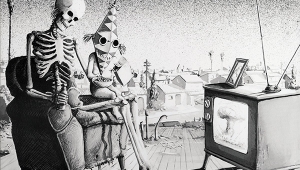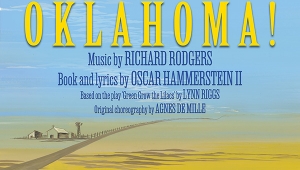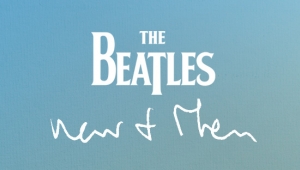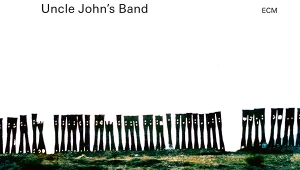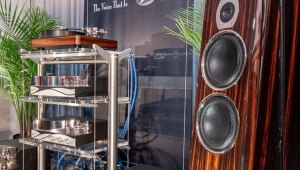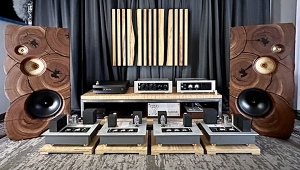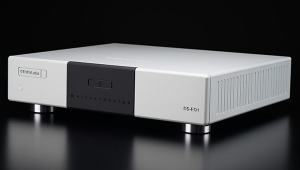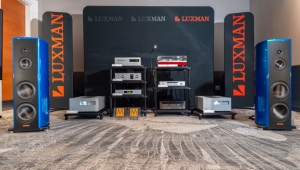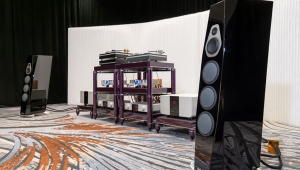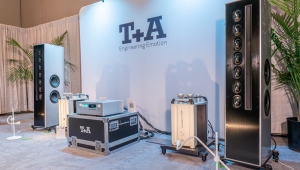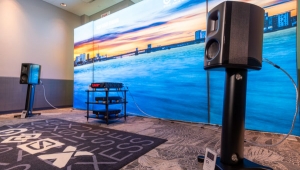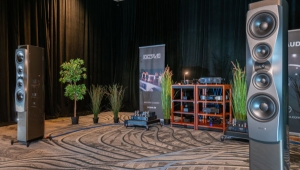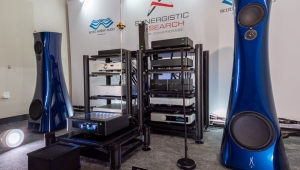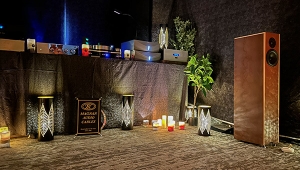| Columns Retired Columns & Blogs |
April 2024 Jazz Record Reviews

Jim Snidero: For All We Know
Snidero, alto saxophone; Peter Washington, bass; Joe Farnsworth, drums.
Savant SCD-2215 (CD). 2024. Snidero, prod.; Kent Heckman, eng.
Performance ****½
Sonics ****
Snidero, alto saxophone; Peter Washington, bass; Joe Farnsworth, drums.
Savant SCD-2215 (CD). 2024. Snidero, prod.; Kent Heckman, eng.
Performance ****½
Sonics ****
Jim Snidero is a veteran of the jazz wars. Arriving in New York in 1981, at age 23, he was a sideman in important bands and produced 26 recordings as a leader. But until For All We Know, he had never made a saxophone trio album. That's surprising given that Snidero is known as both a master and a scholar of the alto saxophone. No format can shine a light on the instrument like a saxophone trio.
This two-track tape was restored by long-time Hendrix producer Eddie Kramer. It sounds outstanding. In this minimalist setting, lacking a chordal instrument, the saxophone is exposed, akin to a quarterback dropping back to pass without linemen upfront for protection.
Turns out, Snidero is a fearless quarterback, and a trio brings out his best. Bursting with ideas, he proclaims them in his huge, pure alto saxophone sound. Expertise in phrasing allows him to shape those creative onslaughts into whole forms. He does not need a pianist or guitarist to fill the open musical space in a saxophone trio.
The title track is a love song of the deepest longing. Snidero plays it so hard that the yearning of "For All We Know" becomes more like soul searching. At the end, he breaks out in a passionate two-minute unaccompanied cadenza, the longest he has ever recorded. He derives subtle, alluring variations from John Coltrane's "Naima" and turns Charlie Parker's "Parker's Mood" into a slow, relentless, bluesy burn. The best may be "My Funny Valentine," where Snidero lingers for eight minutes and keeps discovering new emotional resonances within its famously ambiguous long form.
The rhythm section, bassist Peter Washington and drummer Joe Farnsworth, also sounds inspired by the freedom of the saxophone trio format. Jim Snidero has just made the album of his life.—Thomas Conrad
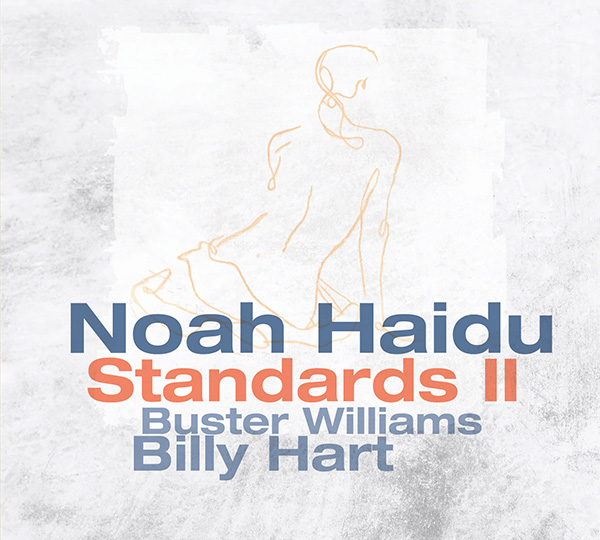
Noah Haidu: Standards II
Haidu, piano; Buster Williams, bass; Billy Hart, drums.
Sunnyside SSC 1739 (CD). 2024. Haidu, prod.; Maureen Sickler, eng.
Performance ****
Sonics *****
In our present jazz moment, there is more focus on original composition than ever before. In 2023, Noah Haidu bucked the trend and released an album called Standards. It was a great example of why some of us hope that jazz musicians never entirely abandon the Great American Songbook. Now there is Standards II, and it is bolder and even better.
The first track by itself makes the case for such repertoire. It is "Over the Rainbow," by Harold Arlen and Yip Harburg, a song beloved by the world since 1939. But it begins as a splashing, intermittently eruptive drum vignette by Billy Hart. Then Haidu floats a piano figure into the mix, and then Buster Williams inserts a bass line of powerful notes, widely spaced. Three voices juxtapose separate threads of thought; the sounds they make are evocative but indeterminate.
From the piano, you hear suggestions of a melody, but it is out of reach. When, after seven minutes, you finally recognize "Over the Rainbow," it is a rush. Even then, you only hear fragments; you never hear the famous interval leap at the beginning ("SomeWHERE...").
Haidu's trio, staying in the moment, only brushes the edges of the song. But what they play is derived from, or contains echoes of, or is inspired by, "Over the Rainbow." The song gives their spontaneously evolving 10-minute creation a reason for being, a touchpoint.
Following tracks like "Someone to Watch Over Me" and "Days of Wine and Roses" are more literal portrayals of tunes by George Gershwin and Henry Mancini. But even here, the melodies provide a bare grid within which three daring improvisers are free to discover and dream. This sonically stunning album should be studied by aspiring jazz engineers as a model for how to record an acoustic piano trio.—Thomas Conrad
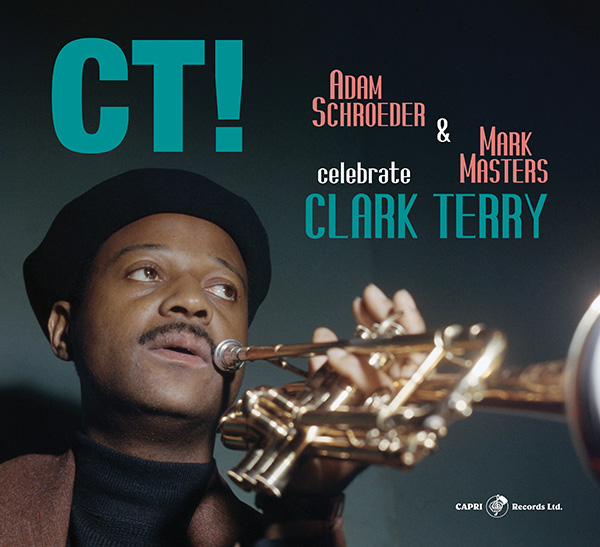
Adam Schroeder & Mark Masters: CT!
Schroeder, baritone saxophone; Masters, arrangements; 11 others.
Capri 74170-2 (CD, available as LP). 2024. Schroeder, prod.; Talley Sherwood, eng.
Performance ***½
Sonics ****
Adam Schroeder and Mark Masters are among the best in jazz at what they do, which is play baritone saxophone and arrange for big band, respectively. They are West Coast guys who would be more famous if they lived in New York.
Masters likes to make albums featuring the work of a single composer. He has arranged music by Clifford Brown, Charles Mingus, Gerry Mulligan, and Alec Wilder. Sometimes he chooses less well-known composers like Jimmy Knepper and Dewey Redman for tributes. CT!, a tribute to Clark Terry, belongs in that category.
If you didn't know otherwise, you might assume that these high-class big band tracks were by Duke Ellington or Count Basie. (Terry played in both orchestras.) As a composer, Terry preferred the blues or "I Got Rhythm" changes. Most of these tunes are outbreaks of life-affirming energy and exuberance, like "In Orbit" and "Ode to Pres." A few are slower and lusher, like "Slow Boat" and "Michelle." Whatever the tempo, they swing with a natural grace you don't hear much anymore. Masters's elegant arrangements shape this compact, 12-piece orchestra into a well-oiled machine, a sleek vintage race car.
Schroeder, who played in Terry's big band, was the organizer of this project and the primary soloist. He can knock you down with the power of his big horn (as on "Serenade to a Bus Seat"), but he tames his unwieldy instrument to express nuanced emotion ("Groundhog"). This California band also contains first-rate musicians including tenor saxophonists Bob Sheppard and Kirsten Edkins and drummer Peter Erskine.
In press notes, Masters says, "This style of music and this type of record are becoming more and more infrequent." He is right about that. We need to enjoy music like CT! while we still can.—Thomas Conrad
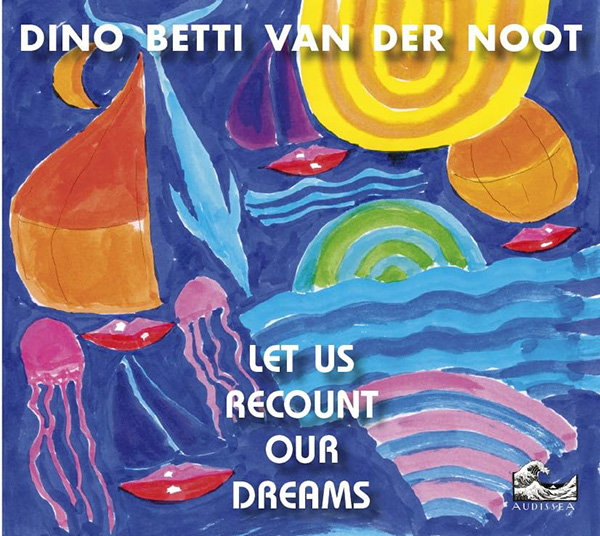
Dino Betti van der Noot: Let Us Recount Our Dreams
Van der Noot, many others
Audissea ADA 016 (CD). 2023. Van der Noot, prod.; Maurizio Giannotti, eng.
Performance ***
Sonics ****
Italian composer Dino Betti van der Noot is a scion of a classical music family, studied jazz at Berklee College of Music, and has been active as a performer and bandleader since the late 1950s. He has witnessed all the musical innovations and movements of the last seven decades. That information has been absorbed, transmogrified, and reflected outward in an impressive catalog of releases since his debut album in 1977.
The above is evident less than three minutes into the opening title track of his latest release. After a diaphanous orchestral intro, punctuated only by cymbals, the 23-piece ensemble drops out, leaving Sandro Cerino's dizi (Chinese transverse flute), Vincenzo Zitello's Irish harp, and Filippo Rinaldo's keyboard mimicking a sitar. While only a minute or so in duration, this segment is transportive. Suddenly, a full-band fanfare emerges then quiets to feature slightly atonal piano from Niccolò Cattaneo, but only for a moment, before a brash saxophone-trumpet duel over fusionesque electric bass. In less than half its 13-minute duration, Van der Noot has explored a panoply of moods and textures, neither settling into tropes nor lingering for too long.
This sets the template—or explodes it—for all five tracks across a pithy 56 minutes. The second piece forefronts Emanuele Parrini's violin against brassy splashes, followed by boozy trombone and elegiac trumpet solos. Then Parrini returns in an almost chanson-like setting.
Van der Noot's orchestra—with its typical horns juxtaposed against the strings, plus additions like Luca Gusella's vibraphone and Federico Sanesi's tabla—afford him an expansive palette. He uses it wisely, preferring subtlety and intrigue over bombast. But he can also craft a soaring epic; "High Seas," the shortest track at just over six minutes, is aptly named.—Andrey Henkin
- Log in or register to post comments







